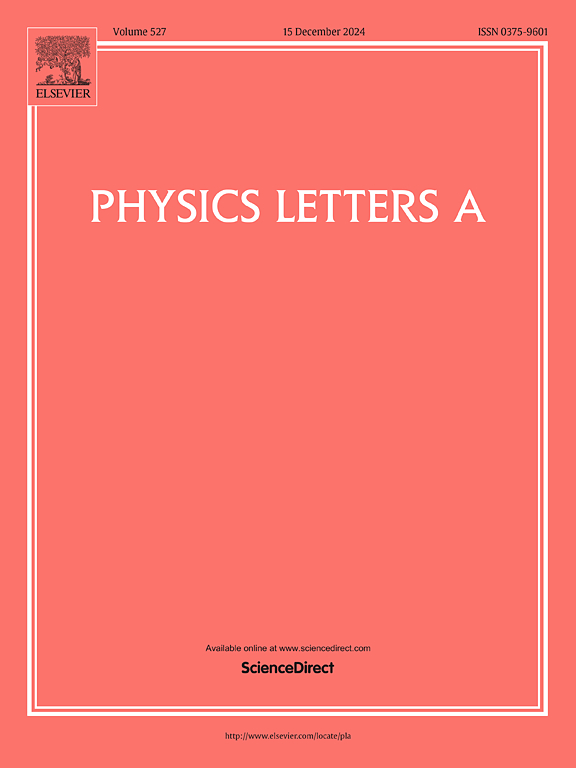Controllable dynamics of circular Airy modulation vortex beams in fractional nonlinear optical systems with two vortex phase modulation structural models
IF 2.6
3区 物理与天体物理
Q2 PHYSICS, MULTIDISCIPLINARY
引用次数: 0
Abstract
The transmission dynamics of circular Airy modulation vortex beams (CAMVBs) with two distinct vortex phase modulation modes are investigated within a fractional-order Schrödinger optical system using a stepwise Fourier method. In the linear regime, the orbital angular momentum (OAM) determines the rotational direction of CAMVBs without altering their shape or transmission properties, with higher OAM splitting the beam into multiple spots ( vortex modulation mode). For the second vortex modulation mode (), CAMVBs exhibit an Archimedean helix-like pattern influenced by OAM. By tuning the topological charge, phase folding number, modulation coefficient, initial phase, and Lévy index, tailored spot distributions can be achieved, offering potential in optical splitting and control. In nonlinear Kerr media, vortex solitons emerge, with their number matching the phase folding number. The solitons’ configuration depends on phase modulation and nonlinear strength, enabling information encoding through beam parameters. These findings hold promise for secure communication and advanced optical systems.
基于两种旋涡相位调制结构模型的分数阶非线性光学系统中圆形Airy调制涡旋光束的可控动力学
采用逐级傅里叶方法研究了分数阶Schrödinger光学系统中具有两种不同相位调制模式的圆形Airy调制涡旋光束的传输动力学。在线性模式下,轨道角动量(OAM)决定了CAMVBs的旋转方向,而不改变其形状或传输特性,较高的OAM将光束分裂成多个点(L= L涡旋调制模式)。对于第二种涡旋调制模式(L=rl), CAMVBs表现出受OAM影响的阿基米德螺旋状模式。通过调整拓扑电荷、相位折叠数、调制系数、初始相位和lsamvy指数,可以实现定制的光斑分布,为光学分裂和控制提供了潜力。在非线性克尔介质中,出现了旋涡孤子,其数目与相折叠数相匹配。孤子的结构取决于相位调制和非线性强度,从而可以通过波束参数进行信息编码。这些发现为安全通信和先进的光学系统带来了希望。
本文章由计算机程序翻译,如有差异,请以英文原文为准。
求助全文
约1分钟内获得全文
求助全文
来源期刊

Physics Letters A
物理-物理:综合
CiteScore
5.10
自引率
3.80%
发文量
493
审稿时长
30 days
期刊介绍:
Physics Letters A offers an exciting publication outlet for novel and frontier physics. It encourages the submission of new research on: condensed matter physics, theoretical physics, nonlinear science, statistical physics, mathematical and computational physics, general and cross-disciplinary physics (including foundations), atomic, molecular and cluster physics, plasma and fluid physics, optical physics, biological physics and nanoscience. No articles on High Energy and Nuclear Physics are published in Physics Letters A. The journal''s high standard and wide dissemination ensures a broad readership amongst the physics community. Rapid publication times and flexible length restrictions give Physics Letters A the edge over other journals in the field.
 求助内容:
求助内容: 应助结果提醒方式:
应助结果提醒方式:


